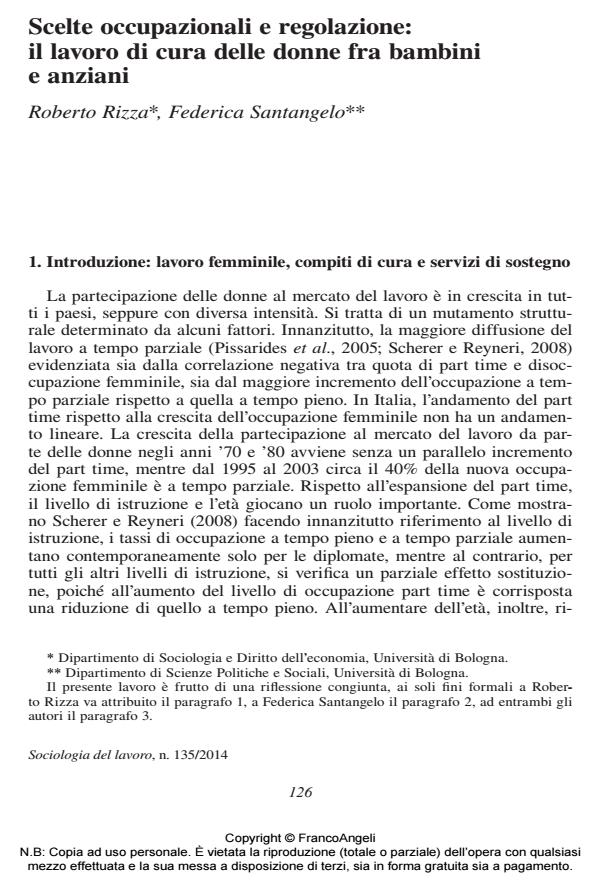Career paths and social regulation: women’s care work between children and the elderly
Journal title SOCIOLOGIA DEL LAVORO
Author/s Roberto Rizza, Federica Santangelo
Publishing Year 2014 Issue 2014/135
Language Italian Pages 16 P. 126-141 File size 105 KB
DOI 10.3280/SL2014-135008
DOI is like a bar code for intellectual property: to have more infomation
click here
Below, you can see the article first page
If you want to buy this article in PDF format, you can do it, following the instructions to buy download credits

FrancoAngeli is member of Publishers International Linking Association, Inc (PILA), a not-for-profit association which run the CrossRef service enabling links to and from online scholarly content.
This article focus on the dynamics of female employment and on the influence of work-life balance policies on women’s activity rate in Italy. The dataset chosen, "Turning points of career paths from a gender perspective" (Crisog), has the advantage of observing both changes in career paths and in the household, during a period of four years. It also provides detailed information about the barriers to the stay of women in the labor market. From a methodological point of view, it has been carried out a event history analysis, to investigate transitions of women from activity to inactivity in the Italian labour market.
Keywords: Women, work, work-life balance policies, transitions, child care, elderly care
Roberto Rizza, Federica Santangelo, Scelte occupazionali e regolazione: il lavoro di cura delle donne fra bambini e anziani in "SOCIOLOGIA DEL LAVORO " 135/2014, pp 126-141, DOI: 10.3280/SL2014-135008